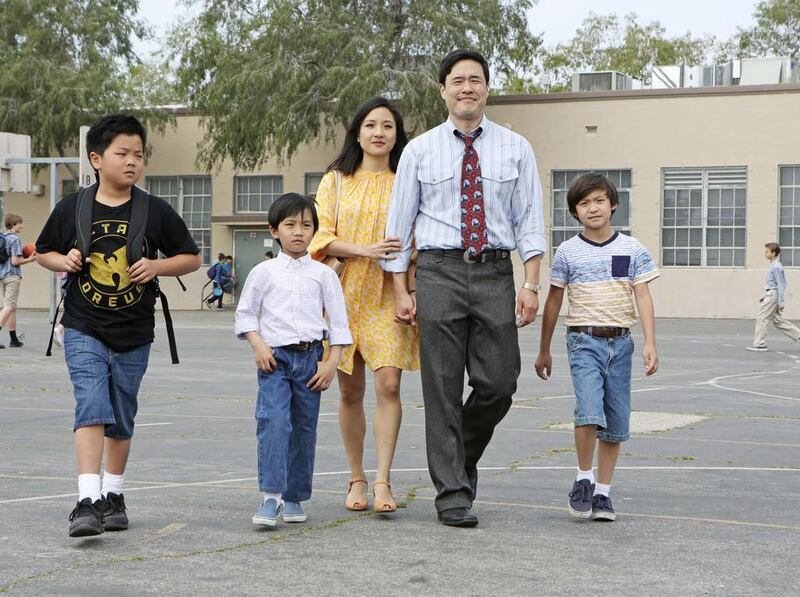The television business – like any other business, I suppose – is all about numbers. And the only number that really counts is the number of people watching.
We call this a “rating”, and though people in the entertainment industry like to toss other metrics around – cost per viewer, audience share and something called “engagement” – if a lot of people are watching your show, that’s basically all that matters. If the number is big enough, there’s really no need to drill down into the details.
Television writers and producers like me will do a lot to get their ratings up. To drive audiences to their shows, I’ve known some producers who have resorted to such downscale tricks as racy language, revealing wardrobes, controversial subjects, and even well-written and compelling storylines. (That last item is usually pulled out only as a last resort.)
I’ve resorted to some of those strategies myself, in desperate times. But more recently, I’ve been guilty of something a little more cynical.
First, some background. The fastest-growing ethnic group in the United States is Asians. Asian-Americans are, obviously, a very large and all-encompassing group – the name itself refers to almost one-third of the globe – but Americans have a bad habit of making up broadly meaningless category names like this. We like to think it’s charming. To everyone else, it’s irritating.
Nevertheless, immigrants from the vaguely non-specific area called “Asia” are a big and getting bigger part of the American make-up.
East and South Asians, especially, have been moving to the United States in large waves over the past 30 years or so, and that’s been apparent in businesses, shops, universities and schools.
But it hasn’t been so apparent in movies and television shows. Until very recently, it was hard to find Asian-American actors on television series or in feature films, and often – as was the case with big-budget studio pictures like Aloha, Ghost in the Shell and Doctor Strange – when a script called for an Asian character, the part was cast with a Caucasian actor who was then expected to “act Asian”, whatever that means.
Right now, in Hollywood, there’s a minor uproar about the lack of Asian faces in movies and in television shows. Advocacy groups working in the entertainment industry are protesting – with good reason – the projects where Caucasian actors are taking over Asian roles, but they’re also pointing to the tiny amount of roles written for, and performed by, Asian-Americans in general.
The situation is different, somewhat, on television. Some of the biggest television comedies on the air right now feature Asian stars. One of the biggest, Dr Ken, is produced by, and stars, the hilarious and ferociously talented Ken Jeong; another one is Fresh Off the Boat, now beginning its third year. But for a long time, despite the large number of Asian Americans that made up the television and moviegoing audience, there weren’t that many on the screen.
Which is a travesty, of course, and something that needs to be addressed, but if you’re an enterprising television producer in a cut-throat and competitive industry, it’s also an opportunity.
At least, that’s how I looked at it.
A few years ago, I was the executive producer of a television comedy that starred a Korean-American comedian. Well, to be totally honest, he is only half Korean. His mother is Korean, and his father is run-of-the-mill American. But because the show was mostly about his family, there were lots of parts for Asian-American actors and actresses to play.
In the numbers-obsessed and ratings-centred world of television, any way you can increase those metrics is worth trying. Because there were so few Asians on American television at that time, I executed a simple strategy.
I instructed our studio publicist to arrange for the cast members to do any and all publicity appearances for newspapers, magazines, radio and television stations – any outlet that had a predominantly Asian audience. For weeks, I pushed them to do anything – I didn’t care how small or insignificant the outlet – to get the word out to Asian- Americans that if they were interested in seeing a family like theirs on television, there was only one place to do it.
My unscientific and probably mildly faulty calculation was that this promotional strategy resulted in somewhere between 250,000 and 500,000 extra viewers, or about half of one ratings point. Which isn’t much, I admit, but these were also younger viewers, mostly younger than 30, which made them more valuable to advertisers. Brands like to reach young people. They don’t really care about ethnicity or national origin because big brands know from research what the rest of us know from experience: young people are pretty much the same all over.
The entertainment business – like every business – is all about numbers. And if you want more people to see your movie or show – or buy your product – you have to pay close attention to who’s out there on the other side of the screen. Those are important numbers, too.
Rob Long is a writer and producer in Hollywood
On Twitter: @rcbl





